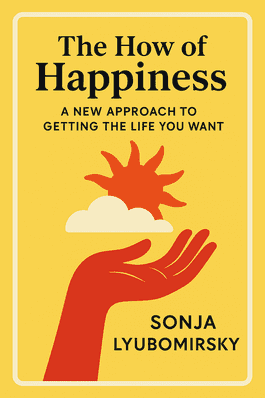What is
The How of Happiness by Sonja Lyubomirsky about?
The How of Happiness is a science-backed guide to increasing well-being through intentional actions. Sonja Lyubomirsky breaks down happiness into three components: 50% genetics, 40% controllable behaviors, and 10% life circumstances. The book provides 12 evidence-based strategies—like practicing gratitude, nurturing relationships, and savoring moments—to help readers sustainably boost their happiness. It combines psychology research with practical exercises, making it a workbook for personal growth.
Who should read
The How of Happiness?
This book is ideal for anyone seeking actionable, research-based methods to improve their well-being. It’s particularly valuable for individuals interested in positive psychology, self-improvement enthusiasts, or those navigating life transitions. Lyubomirsky’s approach is accessible to general readers but rigorous enough for professionals in psychology or coaching.
Is
The How of Happiness worth reading?
Yes—it’s one of the most comprehensive guides to happiness, blending academic rigor with practical tools. The 12 activities (e.g., expressing gratitude, committing to goals) are backed by peer-reviewed studies, and the “Person-Activity Fit Diagnostic” helps readers personalize strategies. Its focus on sustainable habits makes it a standout in the self-help genre.
What are the 12 happiness strategies in
The How of Happiness?
Lyubomirsky’s 12 evidence-based activities include:
- Expressing gratitude and cultivating optimism.
- Investing in social connections through kindness and nurturing relationships.
- Managing stress via coping strategies and forgiveness.
- Increasing “flow” experiences and savoring joys.
- Committing to goals and practicing self-care (e.g., meditation, physical activity).
How does
The How of Happiness explain the 50-40-10 model?
The model posits that 50% of happiness is genetically determined, 40% stems from intentional actions, and only 10% depends on external circumstances (e.g., income, job status). This framework emphasizes that lasting happiness requires effort, not just life changes, empowering readers to focus on controllable behaviors.
What is the “Person-Activity Fit Diagnostic” in the book?
This tool helps readers identify which of the 12 happiness strategies align best with their strengths, lifestyle, and goals. By selecting activities that feel authentic and enjoyable, users increase the likelihood of sustaining new habits. Lyubomirsky advises focusing on the top four strategies from the diagnostic.
Does
The How of Happiness address depression?
While the book isn’t a substitute for clinical treatment, it includes a postscript cautioning that severe depression requires professional help. Lyubomirsky clarifies that her strategies target general well-being enhancement, not mental illness remediation, and encourages those struggling to seek therapy or medication.
How does
The How of Happiness compare to other positive psychology books?
Unlike vague self-help guides, this book prioritizes scientifically validated methods. It’s often compared to The Happiness Project but stands out for its structured framework (e.g., the 50-40-10 model) and diagnostic tools. Lyubomirsky’s academic credentials add credibility lacking in anecdotal approaches.
What criticisms exist about
The How of Happiness?
Some argue the 50-40-10 model oversimplifies complex psychological factors. Others note that maintaining intentional habits long-term can be challenging. However, most critics praise its evidence-based approach and practicality, acknowledging that sustained effort is inherently difficult.
Can
The How of Happiness strategies improve workplace well-being?
Yes—practices like gratitude journaling, fostering social ties, and setting meaningful goals are easily adaptable to work environments. Employees who apply these strategies report reduced stress, better teamwork, and increased job satisfaction, according to studies cited in the book.
What quotes from
The How of Happiness are most impactful?
Key quotes include:
- “Happiness is a state of mind, not a set of circumstances.”
- “The happiest people don’t have the best of everything; they make the best of everything.”
These emphasize proactive mindset shifts over passive waiting for external changes.
Why is
The How of Happiness still relevant in 2025?
Amid rising mental health challenges and remote work isolation, its focus on controllable behaviors resonates strongly. The strategies are adaptable to digital lifestyles, such as virtual gratitude practices or online community building, making it a timeless resource for modern well-being.








